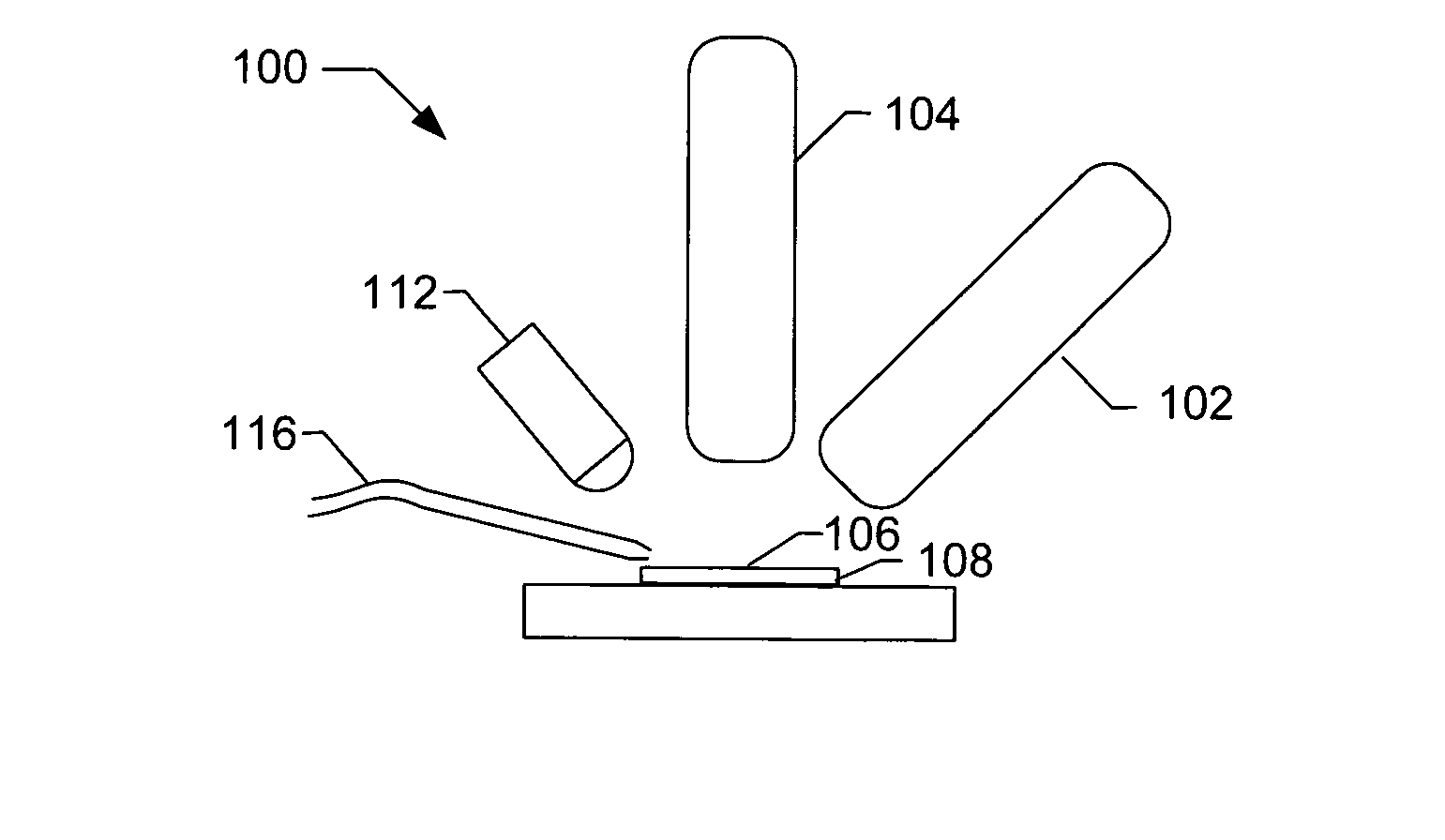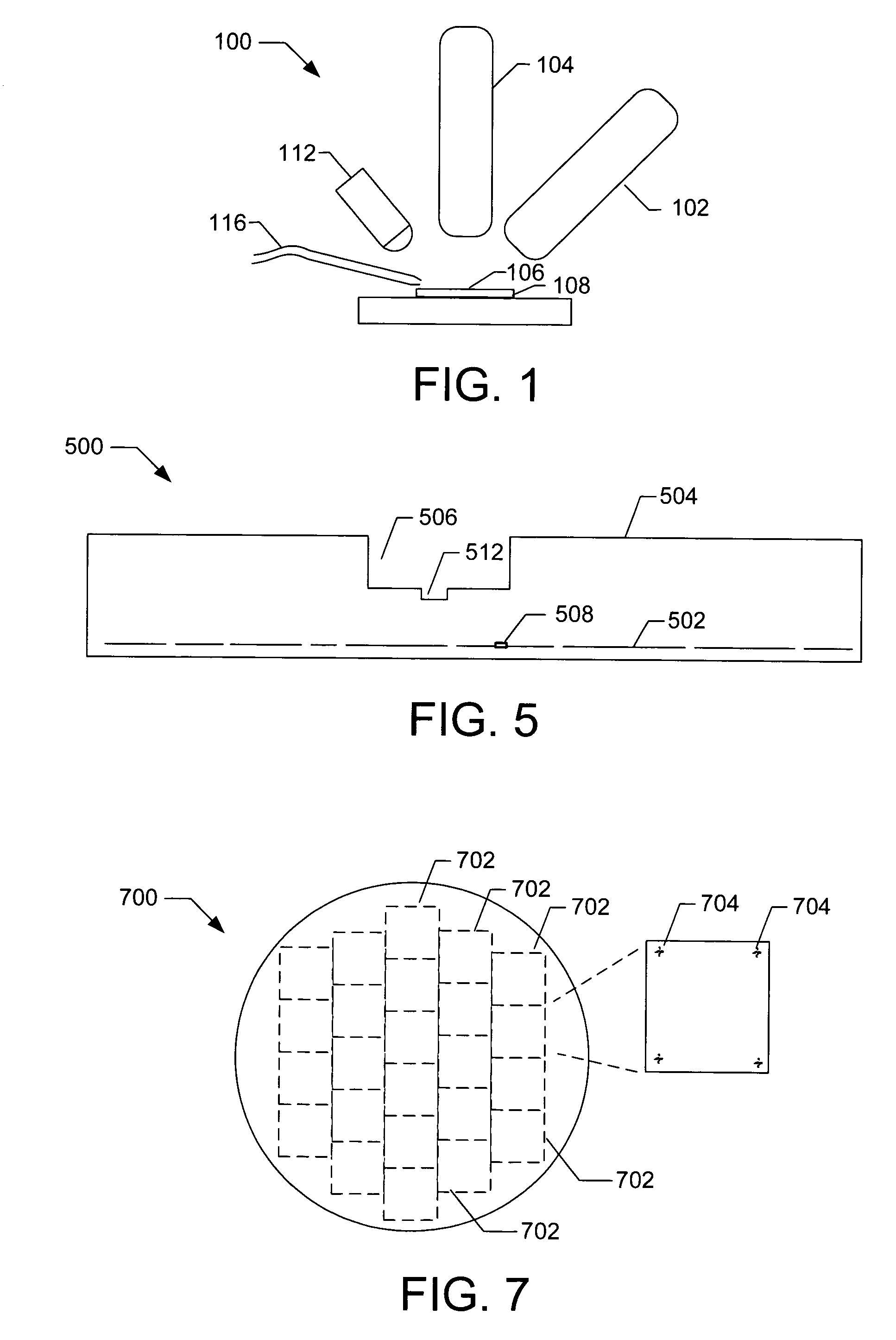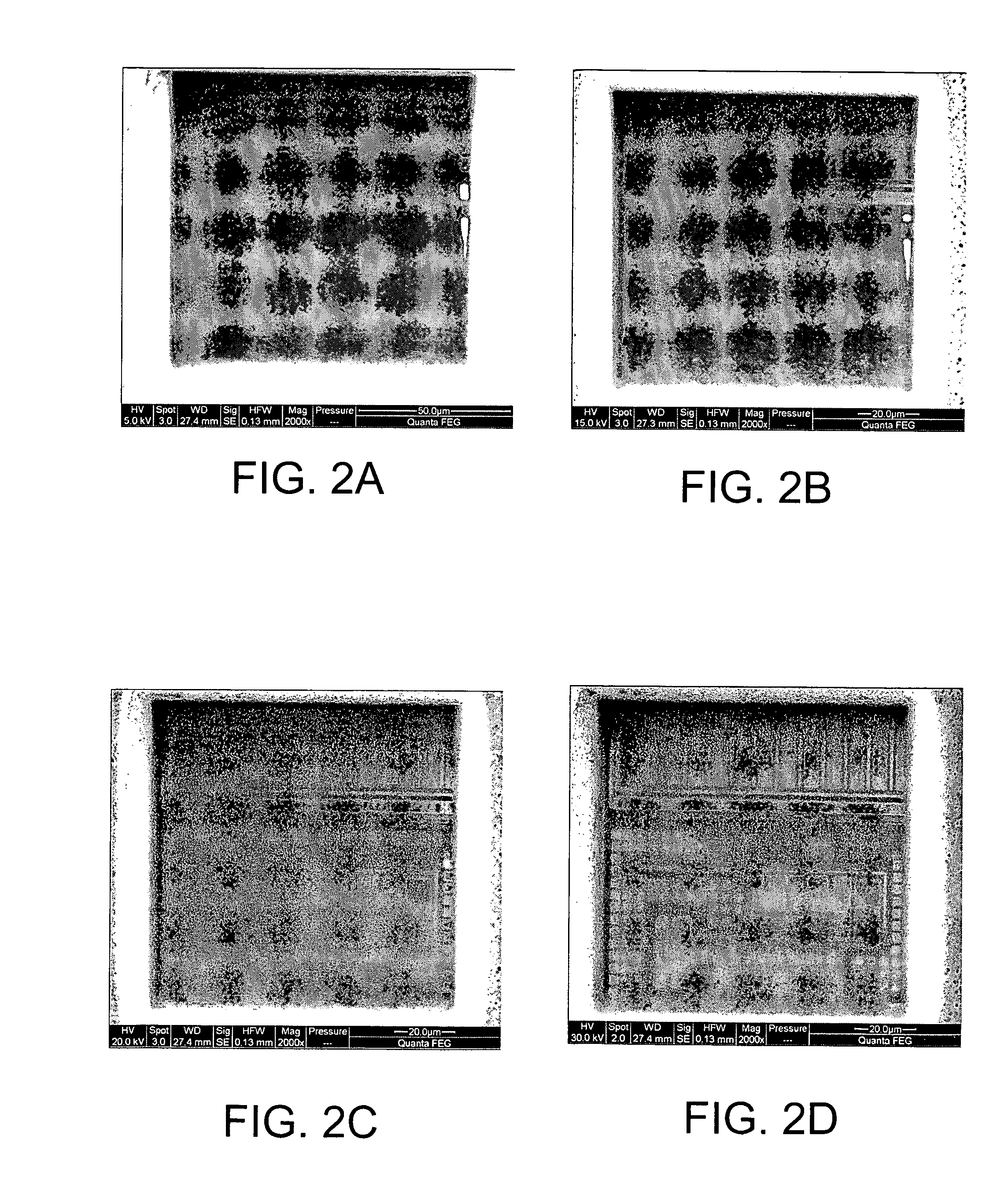Subsurface imaging using an electron beam
a technology of electron beam and surface imaging, applied in the direction of material analysis using wave/particle radiation, instruments, etc., can solve the problems of leakage current through the transistor, no easy way to determine exactly where a particular feature of the circuit is, and no information about the impact of the surface ion beam
- Summary
- Abstract
- Description
- Claims
- Application Information
AI Technical Summary
Benefits of technology
Problems solved by technology
Method used
Image
Examples
Embodiment Construction
[0025]FIG. 1 shows schematically a dual beam system 100 that is useful for implementing the present invention. One suitable system, for example, is the Model Strata 400 available from FEI Company, the assignee of the present application. The invention can be practiced using any electron beam system having the capability to produce an electron beam having sufficient beam energy, signal detectors, and resolution required for the specific application.
[0026]In the embodiment shown, an electron beam column 102 and an ion beam column 104 are oriented at an angle to each other, and the beams produced by each column impinge on the same spot 106 on a substrate 108. In other embodiments, the impact points are separated, and a stage accurately moves the substrate between the beam impact positions. In such embodiments, the beams can be oriented at an angle to each other to reduce the stage travel distance, or the beams could be parallel. In other embodiments, the ion beam and electron beam can ...
PUM
 Login to View More
Login to View More Abstract
Description
Claims
Application Information
 Login to View More
Login to View More - R&D
- Intellectual Property
- Life Sciences
- Materials
- Tech Scout
- Unparalleled Data Quality
- Higher Quality Content
- 60% Fewer Hallucinations
Browse by: Latest US Patents, China's latest patents, Technical Efficacy Thesaurus, Application Domain, Technology Topic, Popular Technical Reports.
© 2025 PatSnap. All rights reserved.Legal|Privacy policy|Modern Slavery Act Transparency Statement|Sitemap|About US| Contact US: help@patsnap.com



